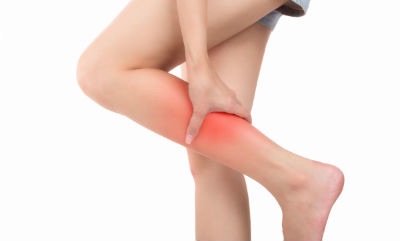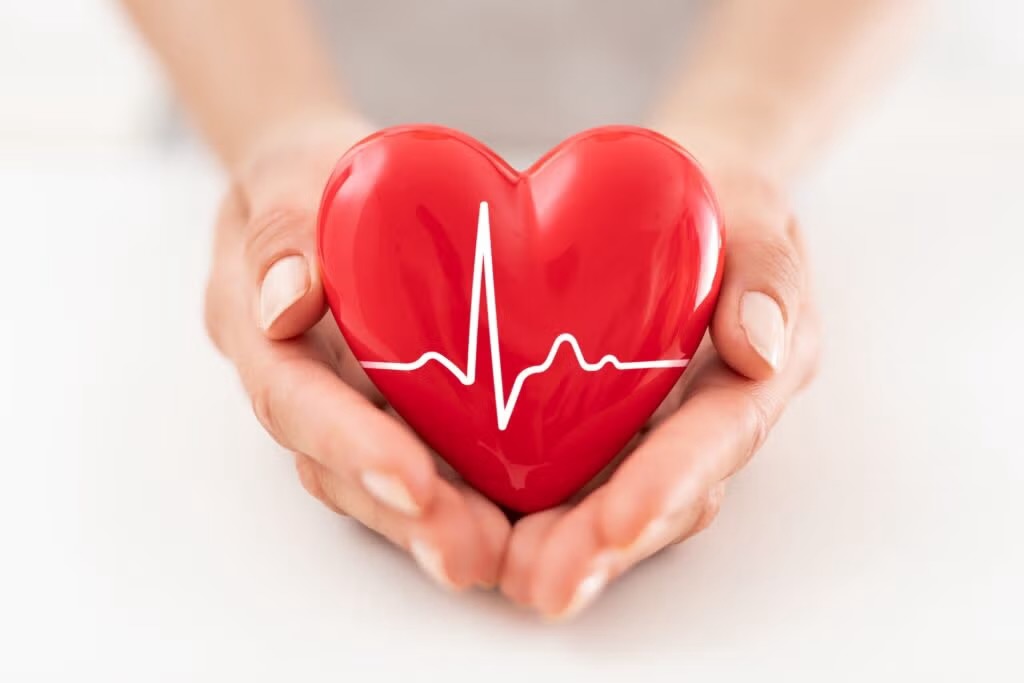Small Lifestyle Changes Can Make A Big Impact On Health!
Making small but significant changes in our lifestyle can radically change our physical and mental health!
Adapting a healthy lifestyle:
Healthy lifestyle revolves around balanced nutrition, regular physical activity and mental peace and happiness.
Balanced Nutrition:
Eat a variety of whole foods including whole grain cereals and pulses, fruits, vegetables and nuts, low fat milk and dairy and healthy fats for vegetarians. And also sea fish, eggs and other lean proteins, for mix food eaters.
Reduce intake of processed foods like refined sugar, refined carbohydrates like rava, maida, bakery products, fried food and trans fats, and high-sodium foods.
Drink plenty of water daily.
Learn to eat sensibly and moderately. Avoid overeating.
Regular Physical Activity:
Walking sufficiently and regularly is the easiest exercise most people can take up easily.
Younger and fitter people can also take up more intensive aerobic exercises like jogging, running, swimming, or cycling for at least 150 minutes per week.
In addition to walking or other cardiovascular exercises, those who have access to trained instructors can take up strength training or resistance exercises twice a week and yoga or stretching exercises.
Sit less, keep moving, walk as much as possible, climb stairs more than using an elevator.
Mental peace and happiness:
Manage stress, take up practices like yoganidra, meditation, pranayama, deep breathing, or take up some hobbies.
Aim to get 7 to 9 hours of quality sleep at night.
Healthy Habits and Routine:
Maintain a consistent sleep-wake cycle.
Quit tobacco, smoking, limit or stop consumption of alcohol.
Maintain healthy weight.
Get regular medical check ups, make sure your blood pressure, blood sugars and lipids are normal.
Keep an eye on your renal function and the health of your eyes if you have diabetes.
ESR and C Reactive Protein are markers of inflammation, keep an eye on them.
Incorporating these small changes in your lifestyle can significantly improve overall health and longevity.
***
Impact on health:
Improved lifestyle will improve cardiovascular fitness, help lower blood pressure, blood sugar, cholesterol and triglycerides, improve HDL cholesterol and protect us from hypertension, heart disease and strokes.
Better muscle health will help reduce insulin resistance, lower blood insulin levels and blood sugars and protect us from diabetes.
Eating sensibly and moderately and exercising regularly will help lower and maintain weight at a healthy level and prevent obesity and obesity related diseases.
It helps improve immunity and helps prevent infections and chronic illnesses.
It helps improve muscle and bone health.
It helps reduce stress, and anxiety, improves mood, improves memory, concentration and cognitive abilities, reduces the risk of neurodegenerative diseases like dementia, Alzheimer’s and Parkinson’s disease and helps improve mental health.
It helps improve digestion and helps prevent constipation, hyper acidity, acid reflux, irritable bowel syndrome (IBS), and ulcers.
It helps prevent and manage diabetes by reducing sugar spikes and improving insulin sensitivity and helps improve metabolic health.
Improved metabolism supports efficient energy production and fat burning, reducing the risk of metabolic syndrome.
It improves sleep quality by helping maintain healthy melatonin levels and promoting better sleep.
It helps improve hormonal balance, improves reproductive health and overall body functions.
It slows down ageing and helps prevent chronic diseases like cancer, hypertension and arthritis.
Also read the articles ‘Simple Steps To Slimming’ and ’Walking To Be Slim And Healthy’ on this website.
Also read the articles ‘Simple Steps To Slimming’ and ’Walking To Be Slim And Healthy’ on this website.
***
जीवनशैलीतील छोटे बदल आपले आरोग्य आणि जीवन बदलू शकतात!
आपल्या जीवनशैलीत छोटे पण सुयोग्य बदलांमध्ये आपले आरोग्य आणि संपूर्ण जीवन बदलण्याची शक्ती असते!
आणि असे बदल करणे सहज शक्य असते, त्यात फार अवघड असे काही नसते!
असे करण्यासाठी आपल्याला थोडी अधिक चांगली जीवनशैली स्वीकारण्याची गरज असते.
हेल्थी (हेल्दी) जीवनशैली:
हेल्थी (हेल्दी) जीवनशैली मध्ये आपल्याला थोडे अधिक चांगले, बॅलन्स्ड न्युट्रिशन घेणे, नियमित एक्सरसाईज करणे आणि थोडे अधिक एक्टिव्ह राहण्याची आणि मन शांत आणि आनंदी ठेवण्याची गरज असते.
बॅलन्स्ड न्युट्रिशन:
आपल्याला न्युट्रिशन बॅलन्स्ड राखण्यासाठी आणि अधिक परिपूर्ण प्रोटीन्स मिळण्यासाठी आपल्या आहारात पोळी, भाकरी, भात (सीरीयल किंवा धान्य) आणि वरण, आमटी, सांबार, उसळी (पल्सेस किंवा कडधान्य) हे एकत्रित घेणे आवश्यक असते.
ह्याशिवाय आपल्या आहारात फळे, भाज्या, नट्स, साय काढलेले दूध आणि दही, ताक, हेल्थी फॅट्स आणि खाद्य तेल, आणि मांसाहारी लोकांमध्ये सागरी मासे, अंडी आणि लीन (लो फॅट) प्रोटीन्स ह्यांचा समावेश असावा लागतो.
उत्तम आहारासाठी आपल्याला साखर, गूळ, रवा, मैदा सारखे रिफाइंड कार्बोहायड्रेट्स, तळलेले पदार्थ, ट्रांस फॅटस, आणि हाय सोडियम पदार्थ टाळणे आवश्यक असते.
आणि असा आहार सेन्सिबली आणि माफक प्रमाणात खाणे आणि ओव्हर इटिंग (अतिसेवन) पूर्णपणे टाळणे आवश्यक आहे.
ह्याबरोबर दिवसभर पुरेसे पाणी पिणे ही आवश्यक आहे.
नियमित एक्सरसाईज:
नियमित वॉकिंग सुरू करणे आणि फिटनेस वाढेल तसे ते वाढवणे हा उत्तम एक्सरसाईज आहे आणि तो बहुतेक सर्व वयातील बहुतेक लोक सहज करू शकतात.
आधी तरुण आणि फिट लोक जॉगिंग, रनिंग, सायकलिंग, स्विमिंग किंवा ट्रेडमिल, एलिप्टिकल ट्रेनर सारखे कार्डियोव्हॅस्क्युलर एक्सरसाईज ही करू शकतात.
वजन कमी करण्यासाठी आणि हृदयाचे आरोग्य उत्तम राखण्यासाठी रोज वॉकिंग किंवा इतर कार्डियोव्हॅस्क्युलर एक्सरसाईज हे सर्वोत्तम एक्सरसाईज आहेत.
शिवाय ज्यांना तज्ज्ञ ट्रेनर उपलब्ध असतील त्यांनी आठवड्यातून दोनदा स्ट्रेंग्थ ट्रेनिंग, फ्लोर एक्सरसाईज आणि किंवा तज्ज्ञ गुरु उपलब्ध असतील त्यांनी आठवड्यातून दोनदा किंवा तीनदा योग करण्यास हरकत नाही.
ह्याबरोबरच कमी वेळ बसा, जमेल तितका वेळ हालचाल, चालणे चालू ठेवा, गुडघे दुखी किंवा टाच दुखी नसेल तर सतत लिफ्ट न वापरता रोज थोडे जिने चढण्या उतरण्याची सवय ठेवा, पण त्याचा अतिरेक करू नका. आणि अगदी खूपच फिट नसाल तर जिने पळत चढणे उतरणे तर अगदीच टाळा.
मन शांत आणि आनंदी ठेवणे:
स्ट्रेस मॅनेज करा, योगनिद्रा, मेडिटेशन (ध्यान), प्राणायाम करा, एखादी हॉबी आत्मसात करा. उत्तर वयात सुध्दा लोक गाणे, चित्रकला, पेंटिंग किंवा लेखन, कविता करणे ह्या सारखे छंद जोपासताना दिसतात, अशा हॉबीज किंवा छंद खूप आनंद आणि मनशांती देऊन जातात.
शिस्तबध्द सवयी लावून घ्या.
खाण्या, पिण्याच्या, एक्सरसाईजच्या आणि झोपण्याच्या वेळा सांभाळा.
रात्री दहा पर्यंत झोपण्याची आणि सात ते नऊ तास झोप मिळवण्याची सवय करा.
स्मोकिंग करत असलात तर बंद करा, अल्कोहोलिक ड्रिंक्स घेत असाल तर अगदी कमी किंवा बंद करा.
वजन जास्त असेल तर कमी करा आणि नियंत्रणात ठेवा.
रेग्युलर मेडिकल चेक अप करवून घ्या, ब्लड प्रेशर, हीमग्रॅम, ब्लड शुगर, लिपिड प्रोफाईल वर लक्ष ठेवा.
डायबीटिस असेल तर रिनल फन्क्शन आणि डोळ्यांच्या आरोग्याकडे लक्ष ठेवा.
इएसआर आणि सी रिॲक्टीव्ह प्रोटीन हे इनफ्लमेशन मार्कर्स आहेत, त्यावर लक्ष ठेवा.
आपल्या जीवनशैलीत हे छोटे बदल केले तर आपले आरोग्य आणि संपूर्ण आयुष्याच बदलू शकते.
***
अशा जीवनशैलीतील बदलांचे आरोग्यावर होणारे परिणाम:
जीवनशैलीतील बदलांनी आपला कार्डियोव्हॅस्क्युलर फिटनेस वाढतो, म्हणजे आपल्या हृदय, फुप्फुसे आणि ब्लड सर्क्युलेशन ह्यांची कार्यक्षमता वाढते, ब्लड प्रेशर, ब्लड शुगर, कोलेस्टेरॉल, ट्रायग्लिसराईड्स, ह्यांच्या लेव्हल्स कमी होतात, एच डी एल (चांगले) कोलेस्टेरॉल च्या लेव्हल्स वाढतात आणि आपल्याला हृदयविकार आणि स्ट्रोक्स पासून संरक्षण मिळते.
मसल्स (स्नायू) चे आरोग्य सुधारते आणि त्यामुळे त्यांची इन्सुलिन वापरण्याची क्षमता वाढते आणि रक्तातील इन्सुलिन लेव्हल्स आणि इन्सुलिन रेझिस्टन्स कमी होतात आणि आपल्याला डायबीटिस पासून संरक्षण मिळते आणि आपले मेटबॉलिक आरोग्य सुधारते.
सेन्सिबली आणि माफक खाण्याने आणि नियमित एक्सरसाईज करण्याने वजन कमी होते आणि आपल्याला लठ्ठपणामुळे होणाऱ्या आजारांपासून संरक्षण मिळते.
आपली इम्युनिटी (रोग प्रतिकारक शक्ती) सुधारते, आणि त्यामुळे आपल्याला इन्फेक्शन्स आणि क्रॉनिक (मोठ्या) आजारांपासून संरक्षण मिळते.
आपल्या मसल्स (स्नायू) आणि हाडांचे आरोग्य सुधारते.
स्ट्रेस, ॲन्गझायटी (काळजी) कमी होते, मूड चांगला राहतो, स्मरणशक्ती, एकाग्रता, कॉग्निटिव्ह (आकलन) क्षमता सुधारते, आणि डिमेंशिया, अल्झायमर्स, पार्किनसन्स सारख्या मेंदूच्या डिजनरेटिव्ह आजारांपासून आपल्याला संरक्षण मिळते.
आपली अन्न पचनशक्ती सुधारते, कॉन्स्टिपेशन (बद्धकोष्टता), हायपरॲसिडिटी, अल्सर आणि इरिटेबल बॉवेल सिंड्रोम (आय बी एस) सारख्या आजारांपासून आपल्याला संरक्षण मिळते.
मेटबॉलिक आरोग्य सुधारल्यामुळे आपल्याला मेटबॉलिक सिंड्रोम होण्यापासून संरक्षण मिळते आणि त्यामुळे हायपरटेन्शन, हृदयविकार, स्ट्रोक्स आणि डायबीटिस हे आजार होण्यापासून पासून संरक्षण मिळते.
आपल्या शरीरातील मेलटोनीन ह्या झोप आणि जाग येणे ह्यांची सायकल नियमित करणाऱ्या आणि झोपेची क्वालिटी चांगली राखणाऱ्या हॉर्मोन च्या लेव्हल्स नार्मल राखल्या जातात आणि त्यामुळे आपली झोप सुधारते, जी आपले आरोग्य उत्तम राखण्यासाठी आवश्यक असते.
आपल्या शरीरातील हॉर्मोन्स चा बॅलन्स उत्तम राखला जातो आणि त्यामुळे शरीराची विविध कार्ये आणि रिप्रॉडक्टिव्ह हेल्थ चांगली राखली जातात.
एजिंग स्लो डाऊन होते आणि कॅन्सर, हायपरटेन्शन, आर्थरायटिस सारख्या क्रॉनिक आजारांपासून संरक्षण मिळते.















